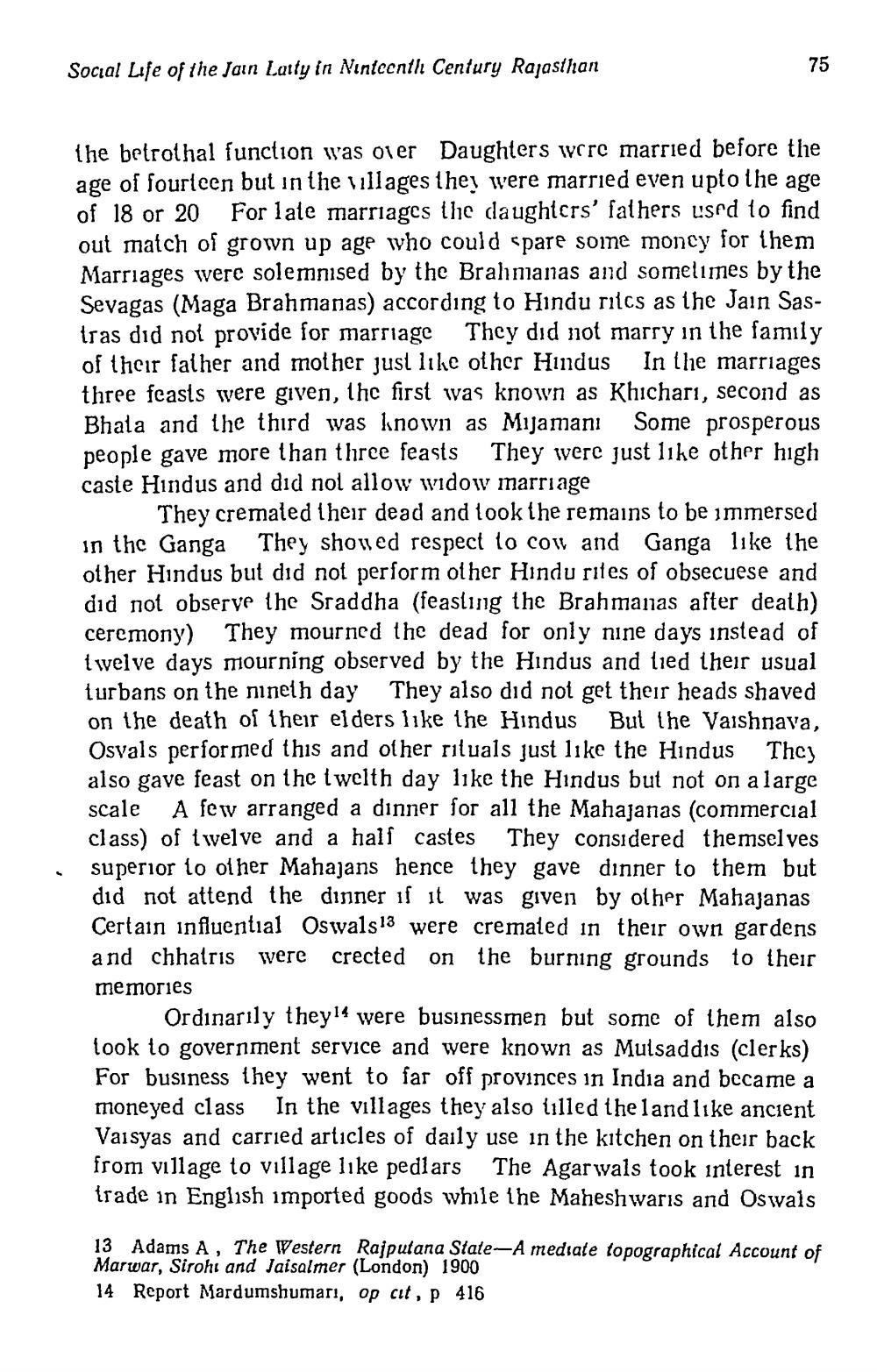________________
"
Social Life of the Jain Laity in Ninteenth Century Rajasthan
115
memories
75
the betrothal function was over Daughters were married before the age of fourteen but in the villages they were married even upto the age of 18 or 20 For late marriages the daughters' fathers used to find out match of grown up age who could spare some money for them Marriages were solemnised by the Brahmanas and sometimes by the Sevagas (Maga Brahmanas) according to Hindu ritcs as the Jain Sastras did not provide for marriage They did not marry in the family of their father and mother just like other Hindus In the marriages three feasts were given, the first was known as Khichari, second as Bhala and the third was known as Mijamanı Some prosperous people gave more than three feasts They were just like other high caste Hindus and did not allow widow marriage
They cremated their dead and took the remains to be immersed in the Ganga They showed respect to cow and Ganga like the other Hindus but did not perform other Hindu rites of obsecuese and did not observe the Sraddha (feasting the Brahmanas after death) ceremony) They mourned the dead for only nine days instead of twelve days mourning observed by the Hindus and tied their usual turbans on the nineth day They also did not get their heads shaved on the death of their elders like the Hindus But the Vaishnava, Osvals performed this and other rituals just like the Hindus They also gave feast on the twelth day like the Hindus but not on a large scale A few arranged a dinner for all the Mahajanas (commercial class) of twelve and a half castes They considered themselves superior to other Mahajans hence they gave dinner to them but did not attend the dinner if it was given by other Mahajanas Certain influential Oswals 13 were cremated in their own gardens and chhatris were crected on the burning grounds to their
Ordinarily they were businessmen but some of them also took to government service and were known as Mulsaddis (clerks) For business they went to far off provinces in India and became a moneyed class In the villages they also tilled the land like ancient Vaisyas and carried articles of daily use in the kitchen on their back from village to village like pedlars The Agarwals took interest in trade in English imported goods while the Maheshwaris and Oswals
13 Adams A, The Western Rajputana State-A mediate topographical Account of Marwar, Sirohi and Jaisalmer (London) 1900
14 Report Mardumshumari, op cit, p 416




